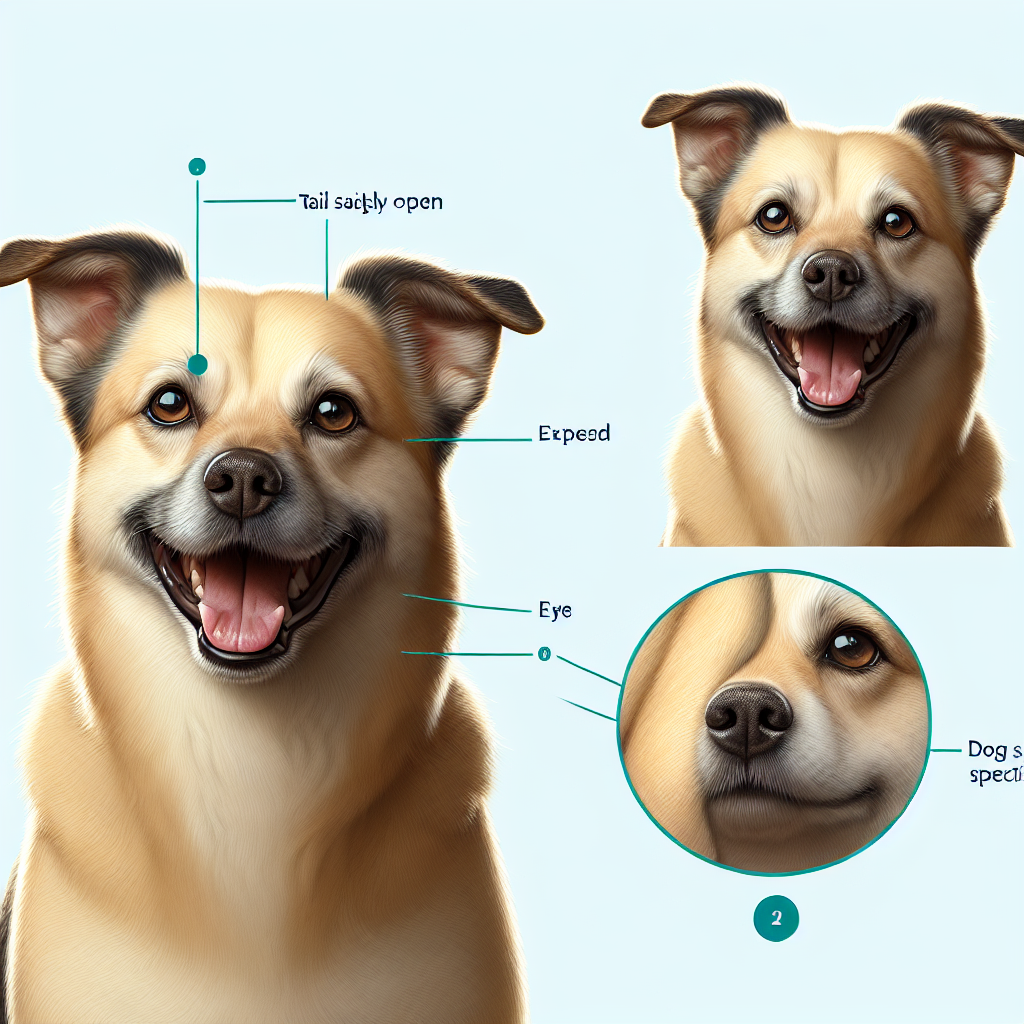Introduction to Flea Troubles

Alright, let’s get down to brass tacks. Fleas. Those tiny hopping nightmares that turn your lovely pet into a scratching machine. They’re not just annoying little bugs; they’re the stuff of pet owner nightmares. I mean, if you’ve ever tried to relax on your couch, only to see your dog gnawing at his own tail like it’s a drumstick, you know what I’m talking about. Flea infestation solutions aren’t just about comfort—they’re about sanity.
Picture this: you’re chilling on a lazy Sunday morning, your coffee steaming, the newspaper spread out before you—and then BAM! You spot a flea. Just one, but that’s all it takes. It’s like finding a cockroach in your soup. You’re suddenly on high alert, because where there’s one, there’s bound to be a whole party happening under your pet’s fur. The fastest way to kill fleas becomes your new life mission.
You see, fleas are like that obnoxious guest who never leaves. They invade your space, make themselves at home, and multiply faster than you can say “flea circus.” So, what’s a pet lover to do? Well, buckle up, folks. We’re diving into the nitty-gritty of flea warfare.
Understanding Flea Life Cycles
First things first—know your enemy. Fleas ain’t just freeloaders; they’re strategic little critters. Understanding the flea life cycle is key to outsmarting them. They start as eggs, tiny and almost invisible. Then, they become larvae, pupae, and finally, adults. Each stage is like a different villain in some bizarre flea opera.
Imagine this: You’ve vacuumed your house, scrubbed your pet, and still, fleas keep popping up like some bad penny. That’s because those sneaky flea eggs are hiding in your carpet, waiting for their moment in the sun. They’re patient, I’ll give them that. But you can stay one step ahead.
Here’s the deal: focus on interrupting their cycle. It’s not enough to just kill the adults. You’ve gotta tackle the eggs, the larvae, the whole darn flea family tree. It’s like playing chess, but with pests. And trust me, controlling flea outbreaks becomes a lot easier once you’ve got this down.
Tackling Fleas on Your Pets
Now, let’s talk about your furry friend. They’re the ones really taking the hit here. Flea treatments for pets are a must, but it’s not a one-size-fits-all deal. You’ve got your shampoos, your collars, your topical treatments—each with its own flair.
I remember the time I tried a new flea shampoo on my dog, Max. It was supposed to be the bee’s knees—or flea’s knees, maybe—but Max hated it. He gave me the stink eye for a week. Lesson learned: find what works for your pet. Don’t just grab the first thing you see on the shelf.
And hey, don’t forget about regular grooming. A good comb can do wonders. It’s like a spa day for your pet, and you get to play detective, searching for those sneaky buggers. The fastest way to kill fleas might just involve getting up close and personal with a fine-tooth comb.
Home Remedies for Quick Flea Control
Alright, I hear you—sometimes you want to go au naturel. Natural flea remedies can be a godsend. You don’t always have to break out the heavy artillery. Sometimes, a little dish soap and water can do the trick for a quick flea removal method.
There’s something satisfying about whipping up your own concoction. Maybe it’s the DIY spirit, or maybe it’s just knowing you’re not dousing your home in chemicals. I once tried a vinegar and water mix. My house smelled like a salad, but hey, it worked.
Remember, though, natural doesn’t always mean instant. These remedies can be a bit slower, but they’re worth a shot. Plus, you get to feel a bit like a mad scientist, mixing potions to ward off the flea invasion.
Daily Habits to Keep Fleas at Bay
So, you’ve declared war on fleas, and you’re winning. But how do you keep them from staging a comeback? Daily flea prevention tips are your new best friend. It’s all about routine, folks. Fleas hate clean spaces—so keep it tidy.
Vacuum like it’s going out of style. Wash your pet’s bedding like you’re a laundry ninja. And don’t forget to check your pet regularly. It might seem like a chore, but trust me, a little effort goes a long way.
I once knew a guy who never vacuumed. His place was a flea paradise. Don’t be that guy. Make flea prevention part of your daily grind, and you’ll be golden.
So there you have it—the lowdown on dealing with fleas. It’s not always pretty, but it’s necessary. You’ve got the tools, the know-how, and the grit to tackle these tiny terrors. Thanks for sticking with me through this flea saga. Stay strong, keep fighting the good fight, and may your home be flea-free.
The Battle of the Bathroom: Flea Baths and Beyond
Ah, the bathroom. A place where you usually wash away the woes of the day, but when you’re dealing with fleas, it turns into a battleground. You ever try giving your pet a flea bath? It’s like trying to wrestle a greased pig in a phone booth. You’re soaked, the pet’s soaked, and there’s water everywhere but where it should be. But hey, it’s all in the name of the fastest way to kill fleas, right?
You get your flea bath setup—water temp just right, flea shampoo ready. Then comes the moment of truth. You dunk your pet in, and it’s game on. It’s chaos. It’s wet. It’s wild. And somehow, you both make it through. The effectiveness of a flea bath might not be perfect, but it’s a start. Just be sure to follow up with some serious snuggle time. Your pet deserves it after that ordeal. And you? Well, you deserve a medal for braving the bathroom battlefield.
Flea Collars: Friends or Foes?
Next up, flea collars. Are they the knights in shining armor or just glorified necklaces? That’s the million-dollar question. Some folks swear by them, saying these little bands are a godsend. Others? They think they’re as useful as a chocolate teapot. But let’s give ’em the old college try.
You’ve got options—natural flea collar options—no harsh chemicals here, just essential oils doing their thing. It’s like giving your pet a spa day, but without the bath part. You slap that collar on, and it’s supposed to be peace of mind in a snap. But, does it work? Well, sometimes it’s a mixed bag. It’s a game of wait and see.
The collar is on, and you cross your fingers. You’re hoping it’s the fastest way to kill fleas without too much hassle. But if it doesn’t work, you still have plenty of other options in this flea-infested journey.
The Vacuum Cleaner Chronicles
Ah, vacuuming. It’s like a never-ending saga, but it’s got to be done. You grab your vacuum, and it’s you against the world—or at least the fleas. The best vacuum for flea removal is one that sucks up everything in its path. And I mean everything. You go room to room, like you’re on a mission from the flea gods.
It’s not just about vacuuming, though. It’s about making sure those little critters don’t come back for round two. You empty that vacuum bag like you’re defusing a bomb—careful, precise. You don’t want those fleas making a comeback tour in your living room.
You keep that vacuum close. It’s your trusty sidekick in this battle. The fastest way to kill fleas often involves a little elbow grease, and boy, do you give it your all. But there’s a sense of satisfaction once it’s done. You’ve tackled the beast, and you’ve done it well.
Flea Traps: Do They Really Work?
Now, flea traps—do they really work? Or are they just another way to part with your cash? It’s a bit like setting up a spy movie in your living room. You place ’em around the house and hope for the best.
You’ve got the homemade flea traps going. A little dish soap, some water, and a light source—voila! You’ve created a flea-catching machine. But then comes the waiting game. You check those traps like a kid on Christmas morning, hoping for some results.
Sometimes, you get lucky. Sometimes, it’s a bust. But it’s all part of the experience. You’re trying everything in your arsenal to find the fastest way to kill fleas. And these traps, well, they’re just another tool in the belt.
The Tale of Flea Powders and Sprays
Finally, let’s talk flea powders and sprays. These bad boys promise to rid your home of fleas faster than you can say “infestation.” But can they really live up to the hype? It’s a tale as old as time.
You grab your flea powder. You’ve got your spray for flea infestation ready to go. It’s like you’re gearing up for battle. You sprinkle, you spray, and you hope for the best. But there’s always that little voice in the back of your head wondering about flea powder safety tips. You don’t want to harm your pet or yourself in this process.
It’s a delicate dance. You follow directions to a T—you’re not about to take chances. And then, you wait. You hope these powders and sprays are the fastest way to kill fleas because, let’s face it, you’re ready for this saga to be over.
So, there you have it. The world of flea control is a wild ride, and sometimes it feels like you’re running a marathon with no finish line in sight. But hang in there, dear reader. You’re not alone in this fight. Keep your chin up, your vacuum close, and know that you’re doing your best. Good luck out there!
Home Remedies: Simple, Quick, and Cheap
Ah, fleas—the uninvited guests that love to crash the party. If you’re anything like me, you’d rather wrestle a bear than deal with these little nuisances. But fear not, I’ve got a few tricks up my sleeve that don’t require a PhD or a fat wallet. Let’s dive into some DIY flea remedies that are not only effective, but also as cheap as chips.
Picture this: it’s a lazy Sunday, and you’re armed with a bottle of vinegar, some lemons, and a shaker of salt. Sounds like the start of a salad dressing, right? Nope—this is your new flea-fighting arsenal. Vinegar is like kryptonite to fleas. Mix it with water and spray it on your pet’s fur; those fleas will be running for the hills. And lemons? Well, they’re not just for lemonade. Boil a few slices in water, let it cool, and use it as a rinse after your pet’s bath. It’s like a spa treatment—only, for flea control.
Now, about that salt. Sprinkle it on your carpets and let it sit for a day or two. The salt dehydrates the fleas and their eggs, turning your carpet into a flea graveyard. Gross, but oh-so-satisfying. Plus, your wallet will thank you—who wants to spend a small fortune on flea control when you’ve got these simple tricks up your sleeve?
Flea Traps: A Sticky Solution
Let’s talk flea traps—a sticky solution that’s as satisfying as peeling the plastic off a new phone. These homemade flea traps are like magic. You set them up, and they do their thing while you kick back with a cup of joe.
Here’s the deal: grab a shallow dish, fill it with soapy water, and shine a light over it. The fleas are drawn to the light and warmth, like moths to a flame, and they end up in the soapy water, unable to escape. It’s like a tiny flea pool party—minus the fun for them.
And if you’re feeling crafty, you can make sticky traps using some paper and a bit of glue. Fleas jump onto the paper and get stuck. It’s almost too easy. Homemade flea traps are a great way to see just how many of the little critters you’re dealing with. Consider it your not-so-secret weapon.
The Power of Prevention: Keep Fleas at Bay
Now, prevention—that’s where the magic really happens. It’s like building a fortress around your furry friend. You don’t want to wait until your house is flea central to take action. Trust me, regular grooming and cleaning are your secret weapons. It’s like having a little insurance policy against fleas.
Think of it this way: a clean pet is a happy pet. Regular baths and brushing help keep those pesky fleas at bay. And don’t forget about your home. Vacuum often, wash your pet’s bedding, and keep things tidy. It’s not rocket science, but it works.
And for those who fancy a natural approach, consider natural flea prevention tips: essential oils like lavender and cedarwood are not only pleasant to our noses but are also on the fleas’ dislike list. Add a few drops to your pet’s collar or dilute with water and spray it around your home. It’s like a natural barrier—and it smells pretty darn good, too.
Professional Pest Control: When to Call in the Big Guns
Sometimes, though, things get out of hand. Your pet’s scratching like there’s no tomorrow, and you’ve tried everything short of calling in an exorcist. That’s when you know it’s time to call professional flea exterminators. It’s not admitting defeat—it’s just knowing when to step aside and let the experts do their thing.
Picture this: your home is flea central, and no matter what you do, they just keep coming back. That’s when the pros come in with their heavy-duty solutions. They’ve got the tools and the know-how to tackle even the worst infestations. So if you’re at your wits’ end, don’t hesitate to pick up the phone.
And hey, if you’re worried about chemicals and whatnot, many professional services now offer natural and eco-friendly options. It’s like having your cake and eating it too—getting rid of fleas without harming the environment.
Final Thoughts: Living Flea-Free
Living flea-free doesn’t have to be a pipe dream. With the right steps, you can bid those little bloodsuckers adieu. Imagine a world where your pet is happy, healthy, and scratch-free. It’s a beautiful thing.
Thanks for sticking with me through this flea-ridden journey. Remember, a bit of elbow grease, some natural remedies, and the occasional call to the pros can go a long way. Here’s to a flea-free life and a happy, healthy pet. Cheers, my friends!
Quick Takeaways:
Alright, let’s get down to brass tacks. Fleas are like that unwanted guest who just won’t leave. The fastest way to kill fleas? Well, it’s not just one thing—it’s a combo of strategies. First, you’ve got your flea bath. It’s no spa day for your pet, but it gets the job done. Think of it as a reset button. Then there’s vacuuming—yeah, you’re gonna become best buds with your vacuum cleaner. It’s relentless, but that’s what makes it effective. Every nook and cranny. Flea traps? They’re not just a gimmick. Set them up and watch the magic happen while you sip your morning coffee. For those looking to go au naturel—vinegar and lemon are your buddies. Sprinkle some salt for good measure. It’s like cooking up a flea-fighting storm in your kitchen. And don’t forget those flea collars. They’re like little shields for your pet. Some swear by the natural flea collar options. But hey, everyone’s got their quirks. The key? Keep at it. Regular cleaning and grooming go a long way in keeping those tiny vampires at bay. Prevention is the name of the game, folks. Daily flea prevention tips are your best friend. You’re not just controlling flea outbreaks—you’re stopping them before they even start. And when all else fails, calling in the pros isn’t waving the white flag. It’s knowing your limits. So, here’s to a flea-free home and a happy pet, without breaking the bank.
FAQs:
1.
What’s the fastest way to kill fleas in my home?
The fastest way to kill fleas is a multi-pronged approach. You start with a thorough vacuuming—every day, if you can swing it. Hit all the usual suspects: carpets, furniture, and your pet’s favorite hangouts. Flea sprays can also help. They’re like a one-two punch. For quick flea removal methods, consider a flea bath for your pet. It’s not glamorous, but it’s effective. Finally, those homemade flea traps? They’re like having little spies in your home, catching fleas when you’re not looking.
2.
How can I prevent a flea infestation naturally?
Natural flea prevention is all about routine. Regular grooming of your pet is a must. A flea comb is your new best friend. Bathing your pet with a mild soap can help too. Around the house, sprinkle some diatomaceous earth on carpets and let it sit before vacuuming. It’s like sprinkling pixie dust that fleas hate. And don’t forget to wash your pet’s bedding often. It’s about creating an unwelcome environment for fleas.
3.
Are flea collars effective for flea control?
Flea collars can be hit or miss. Some folks find them to be a lifesaver, while others think they’re overrated. Natural flea collar options are available, though. They’re like the peacekeepers of flea warfare. They can help keep fleas at bay, but it’s best when combined with other flea treatments for pets. It’s like having a team effort against the flea menace.
4.
What are some natural flea remedies I can try at home?
Oh, you’re in luck! Nature’s got your back. Vinegar and lemon are your go-to. Mix them with water and spritz away. Sprinkle salt on your carpets before vacuuming. It’s like a mini chemical-free flea bomb. And don’t forget the power of essential oils like lavender and peppermint. They’re not just for aromatherapy—they’re flea deterrents too. But always check they’re safe for pets first.
5.
How do professional flea exterminators get rid of fleas so quickly?
Professional flea exterminators come armed with the big guns. They use specialized sprays and treatments that you can’t get over the counter. It’s like having a secret weapon. They also know the flea life cycle inside out, which helps in targeting them at every stage. Sometimes, it’s all about knowing the right spots to hit. When the going gets tough, these pros have the know-how to tackle flea infestation solutions effectively.
Conclusion:
So, there you have it. When it comes to fleas, it’s all about the hustle. The fastest way to kill fleas isn’t some magic bullet—it’s a blend of good old-fashioned persistence and smart strategies. You’ve got your flea baths, your vacuum, and your natural remedies. Each plays its part in the grand scheme of flea control. But remember, prevention is your best friend. Regular grooming, cleaning, and a few preventive measures can keep those pesky fleas from turning your home into a flea hotel. And if things get out of hand, don’t feel bad about calling in the pros. It’s not giving up—it’s leveling up. So, here’s to a flea-free home and a happy, itch-free pet. Keep your chin up and your vacuum ready. Thanks for sticking with me through this flea saga. You’ve got this!
References:
1. https://www.healthline.com/health/healthy-home-guide/how-to-get-rid-of-fleas
2. https://www.petmd.com/dog/parasites/how-get-rid-fleas-fast
3. https://uk.frontline.com/pet-advice/seen-multiple-fleas-house
4. https://www.webmd.com/pets/remove-fleas-from-pet
Our solution eradicates fleas on contact without harmful chemicals, ensuring a safe environment for your pets and family. Easy to use and highly effective, SayByeBugs helps you maintain a flea-free home. Learn more and order today at SayByeBugs.com
Our solution eradicates fleas on contact without harmful chemicals, ensuring a safe environment for your pets and family. Easy to use and highly effective, SayByeBugs helps you maintain a flea-free home. Learn more and order today at SayByeBugs.com








